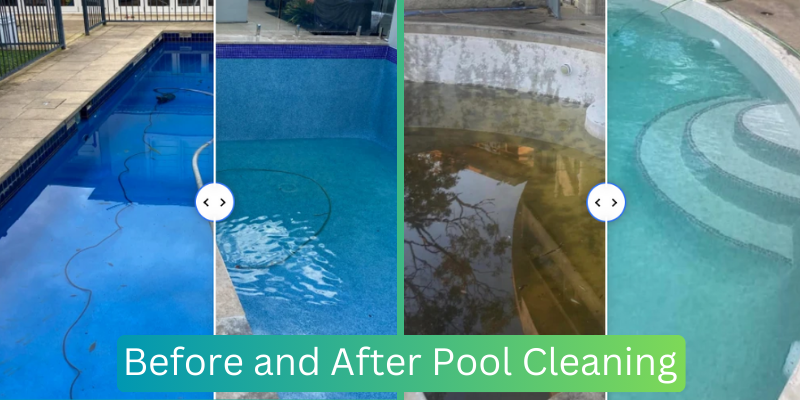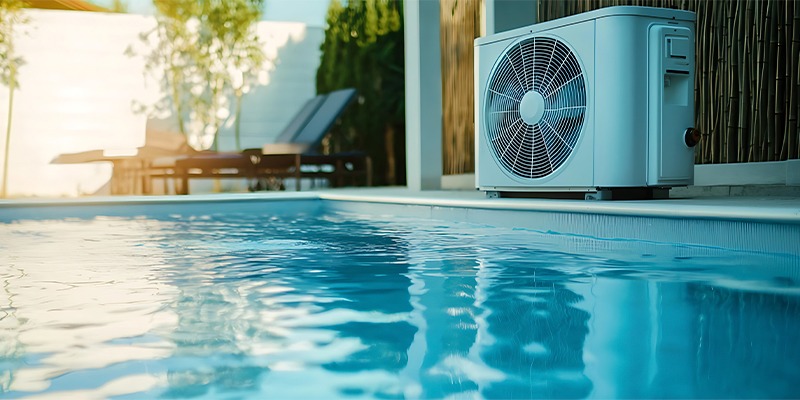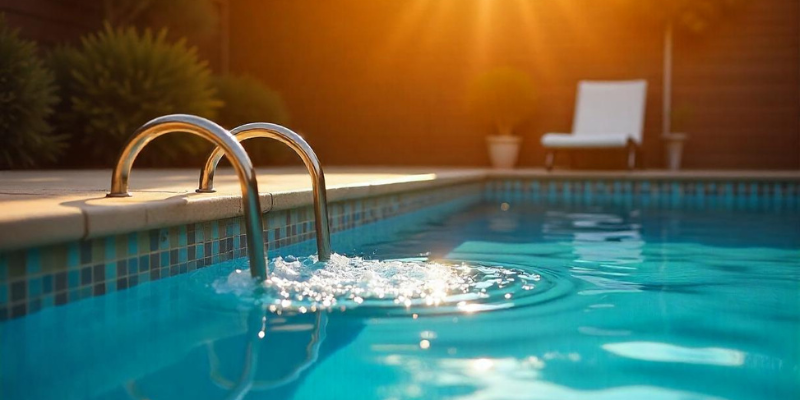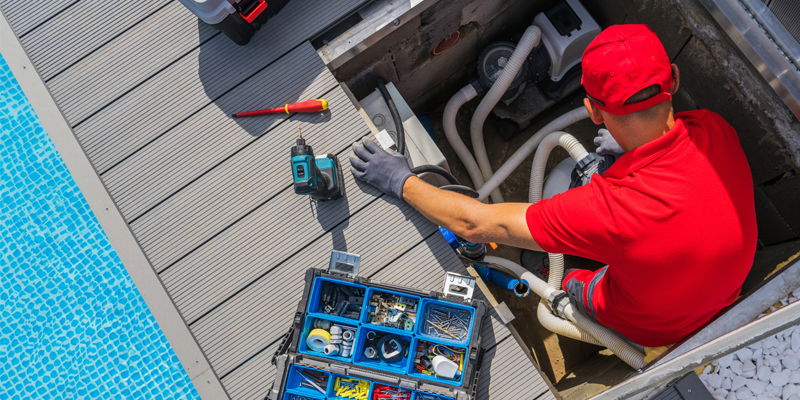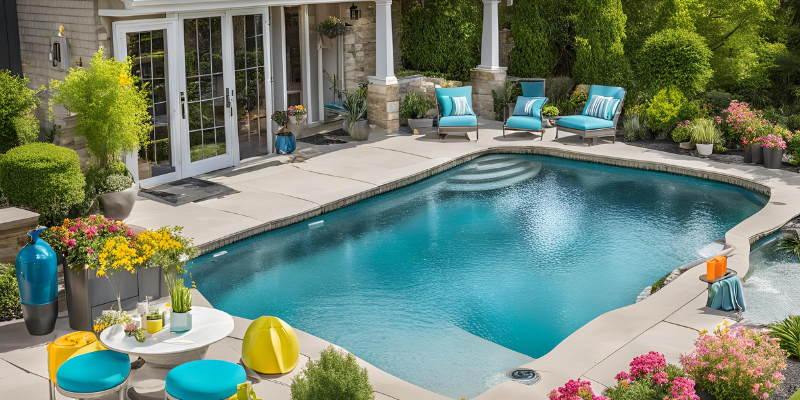
Spring is here, and it’s time to prepare your pool for a fun-filled summer. Before diving into the refreshing waters, it’s crucial to ensure your pool equipment is functioning correctly and that the water is crystal clear and balanced. Here’s a handy checklist for you and your pool service company to ensure your pool is ready for countless hours of enjoyment.
1. Clean Your Pool Cover
If you’ve had your pool closed during the winter months, it’s essential to start by cleaning your cover to extend its lifespan. Begin by removing any debris, such as leaves or twigs, that may have accumulated on top. After clearing off the dirt, hose down the cover with water to prevent any remaining grime from falling into the pool when you take it off. Once clean, allow the cover to dry thoroughly before folding or storing it away to prevent mould growth.
2. Inspect Your Pool
Now that the cover is off, it’s the perfect time to visually check your pool for any signs of damage or wear. Look for cracks in the tiles or lining and note any elements that may require repair. While doing this, take the opportunity to reverse any winterisation tasks.
Change drain plugs removed from the heater, filter, or pump. Make sure pipes are correctly reconnected and remove plugs from pool fittings or filtration openings. Reassemble the skimmer baskets and return the eyeball inlet fittings.
3. Top Up the Water and Check the Pump
A correctly functioning pump is essential for keeping your pool clean and safe throughout the summer. Begin this process by checking the pump’s functionality to ensure that all seals are intact and that the equipment is operating correctly. If there are any issues, a seasoned professional should be able to recommend necessary repairs. The winterisation process typically involves lowering the water level slightly, and you may have lost additional water during the off-season.
It’s important to refill your pool to the normal level, which is about two-thirds up the skimmer, using a garden hose. This simple action ensures the pump can operate efficiently and keep the water circulating properly.
4. Backwash or Replace the Filter
Pool filters are a crucial part of your pool’s circulation system, working to keep the water clean and clear. When you open your pool for the season, your pool professional may recommend backwashing or replacing your swimming pool filters. It ensures the filter operates efficiently, allowing your system to circulate the water effectively.
Proper pool filter maintenance is critical, as a clean filter can significantly improve water clarity and reduce the workload on your pump. A dirty or clogged filter can hinder water flow, leading to a less enjoyable swimming experience.
5. Start the Pump and Filter
Once you’ve completed the previous steps, it’s time to start your pump and filter. Begin by restoring the circuit breaker in your home, then switch on your pool system. Run the filter pump on “backwash” for about three minutes to clear away any debris that may have accumulated in the system during the winter months. This action initiates the filtration process, enabling to circulate water throughout your pool and prepare it for use.
6. Check the Filtration System
At this point, it’s crucial to inspect your filtration system and the surrounding pipework for any signs of leaks. Additionally, make sure that your pump is priming correctly; however, if the pump struggles to prime, there may be an air leak present.
- Common issues could include the coarse strainer not sealing properly or the socket union between the pump and the valves not being tightened fully.
- Another possibility is that the rubber gasket in the socket union has worn out and needs replacement.
- For older pumps, leaks may occur between the pump and motor, causing priming.
Addressing these issues early will help ensure the longevity and efficiency of your system.
7. Scrub the Pool Walls and Steps
No one wants to dive into a pool filled with algae or grime on the walls. After confirming that your filtration system is functioning properly, it’s time to scrub the pool tile.
- Use a good quality brush to clean the sides and steps, removing any build-up.
- If the walls appear dirty or stained, ask your maintenance person whether an acid wash is necessary.
- Regular scrubbing helps keep the pool hygienic and enjoyable, reducing the chances of algae growth and ensuring that your pool is always inviting for family and friends.
8. Brush and Vacuum the Pool
Once the walls and steps are clean, it’s important to dislodge any additional dirt that may still be lurking in the corners. Use a cleaning brush carefully scrub the pool floor, reaching every area. Then use a pool vacuum to eliminate settled sediment and debris. Automatic pool cleaners can be especially beneficial, allowing you to relax while they navigate around your pool and suck up dirt into their filter. This step is crucial to maintaining a pristine pool environment, ensuring your water remains clear and enjoyable for swimming.
9. Balance the Water
Upholding the correct water balance is essential for a healthy pool. It’s not adequate to just add chlorine. You must ensure pool water maintains an alkalinity level between 80 to 120 ppm and a pH level between 7.2 and 7.8 throughout the swimming season. Achieving this balance can be tricky if you rely on over-the-counter test strips, which may not provide accurate readings.
Therefore, consider enlisting a professional who can quickly and accurately balance your water, ensuring a safe and pleasant swimming experience for everyone. Properly balanced water helps prevent irritation to the skin and eyes while maximising the effectiveness of your pool chemicals.
10. Shock the Pool Water
Now that your pool is clean and balanced, it’s time to shock the water. Pool shocking includes adding an extra chlorine dose to remove excess algae and bacteria growth. It’s a vital step in preparing your pool for use, ensuring the water is safe for swimming with chlorine dosing systems. After shocking your pool, always wait until the chlorine levels return to a safe range before anyone jumps back in. This waiting period is important for the health and safety of all swimmers. Shocking improves water quality and helps prevent future issues, allowing for a more enjoyable swimming season.
11. Add Other Chemicals
While shocking your pool will do most of the heavy lifting, you may also want to add other speciality pool chemicals. This could include algaecide, which provides extra protection against algae formation, especially if your pool is prone to this issue.
These additional chemicals help maintain your pool’s cleanliness and can significantly reduce maintenance efforts throughout the season. Always consult your pool professional to determine the best products for your specific needs, ensuring your pool remains in top condition all summer.
12. Schedule Regular Maintenance
Keeping your pool fresh and sparkling requires regular attention throughout the summer. To maintain a clean pool, ensure the filter is cleaned regularly and be prepared to shock the water as necessary. Additionally, debris should be removed frequently to keep the pool inviting and enjoyable.
Regular water testing and balancing should be conducted at least once a week to ensure optimal conditions. A consistent maintenance schedule will enhance the swimming experience and extend the lifespan of your pool equipment, ultimately saving you time and money in the long run.
Wrapping It Up
By following these spring pool maintenance steps, you’ll be well on your way to a fantastic summer filled with fun and relaxation. Regular Pool maintenance is key to ensuring your pool remains in excellent condition, providing a safe environment for your family. With professional local pool maintenance, your pool will remain clean, inviting, and ready for endless fun throughout the season, ensuring countless hours of enjoyment.
Thermo Pools is the pool heating specialist in Sydney—contact us for solar pool heating or pool heating services. Let us help you get the best out of your pool!





